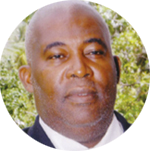
QUITE recently, a student attending the Grand Riviere Primary School was struck by a vehicle in the Corinth area. According to reports from first responders, it took a considerable amount of time before a telephone call was placed to 911, although several people had arrived on the scene. One thought that the other had already placed the call.
Social Psychology explains “The Bystander Effect” as a phenomenon whereby the greater the number of bystanders who witness an emergency, the less likely any one of them is to help.
The principle there is that had one or two persons been on the scene of the accident, it is very likely that one of them would have placed an emergency call to first responders.
Now a similar case occurred in 2015 when a student attending the Carmen Renee Primary School came into contact with a minibus at or near a pedestrian crossing on the waterfront. Two persons who witnessed the accident rushed to the rescue of the student to help, particularly because a school child was involved.
In a moment, the scene was thronged with onlookers who just wanted to have a glimpse of what was happening. It is my understanding that a telephone call was placed to first responders by one of the two persons who witnessed the accident.
It has now come to our knowledge that such cases must be handled carefully. In cases of a vehicular accident, the victim must not be handled by bystanders or onlookers but instead be allowed to be handled by first responders who would be able to take proper care of the victim. The reasoning is that persons who are not trained could cause more damage to the victim.
In terms of receiving help at an accident, there is no safety in numbers. The idea is for everyone to be determined to make an emergency call requesting help for the victim. In other cases that are less fragile, persons who are present must come to the help of the victim.
Sometimes it is clear that an emergency has occurred. Other times however, it is not so clear. If you’re late for work or hurrying to an appointment in a crowded area or along a crowded street, you may not notice a sick person has fallen in a doorway of a building not too far away.
Interestingly, in St. Lucia, many of us go pass people lying on the ground or a secluded area and we assume that the individual is probably intoxicated or a homeless person having a rest. And we never bother. More so if we know the lifestyle of the individual.
Indeed, there are times when those persons are in dire need of help to get them into a hospital or care clinic. If one is not trained it may be hard to determine.
But I must admit, there are persons in our communities who are very observant. Let me use myself as example. I suffer with back pains and usually after I have walked quite a distance, I must stop and rest for a little while. A person may pass by and ask: “Sir, are you alright?”. I would simply reply “Yes, I’m alright, thanks”. The point is that if I needed help, the individual would quickly assist. Therefore, we must always pay attention to details as we go along in our various communities. Always be on the alert! Be more observant and pay attention to what is happening around you.
No matter how alert we are, sometimes it may be difficult to interpret an event as an emergency. Or as a situation where help is needed.
Earlier I referred to the individual lying on the ground. He or she may be drunk or seriously ill and in need of emergency help. But it may be exceedingly difficult to determine unless you are a medical person trained to detect such events or situations.
When we are uncertain about an event, situation or occurrence such as whether the smoke we see coming from a building, we usually look to see how other people are responding. If other people look up, shrug and go about their business, we are likely to assume that there is nothing to worry about. But if somebody yells Fire! Fire! Fire! We immediately assume that the building is on fire, and we react.
From my experience in St. Lucia, people will run anywhere there is a fire. Not that their primary purpose is to act, but simply to be in the middle of the action. One or two may try to help immediately but the majority would be mere onlookers obstructing first responders. So many times fire officers have to remind the general public about obstructing them during the discharge of their duties.
No doubt, some of the onlookers could be used as a source of information. Journalists are usually happy to interview them to produce their stories for the news.
But the point is many of them would see the building going up in flames and would not lift a finger or provide any sort of help to the actual event.
It is important to indicate that there are reasons why persons may bypass an individual on the ground and do nothing about it. They do not take or assume responsibility. If the person is sick, they would have to inform first responders or take the person to the nearest hospital; provide important information and may even have to spend a lot of time away from work to provide those important bits of information or even to provide material support to the victim. And that may be an important consideration for many.
I would conclude that this is a strange happening in our society or community which would continue indefinitely.












